Are you dreaming of having a comfortable sectional sofa in your living room? Have you been wondering how to connect the pieces and make a single, beautiful piece of furniture? Connecting sectional sofas is not as difficult as it may seem.

With the right type of hardware and knowledge of the types of connectors available, you can easily assemble your own sectional couch or choose from a wide range of modular sofas with built-in connectors. With a few simple steps and tools, you can transform your indoor space into one filled with comfortable seating and plenty of styles!
Why you need to know about connecting sectional sofa
Knowing how to connect a sectional sofa is important for several reasons.
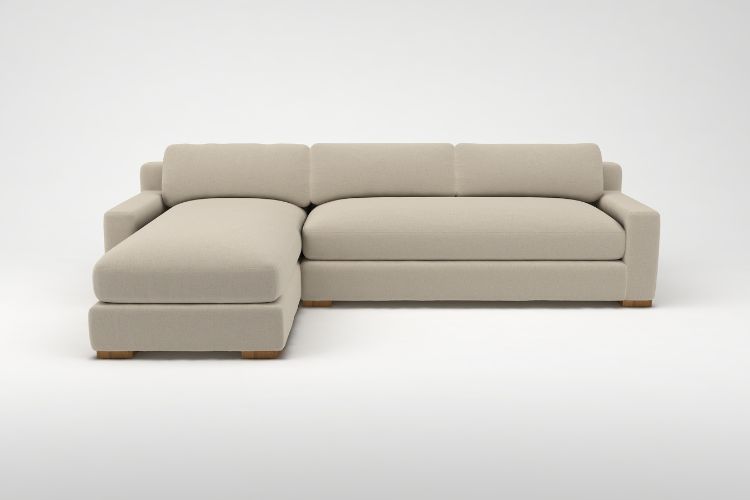
- It ensures the structure of the sofa is secure and stable, preventing any damage or injury when people are using it.
- It ensures that all pieces fit together properly and create a cohesive seating area.
- Connecting a sectional ensures a more comfortable seating experience, as all pieces of the sofa stay connected as intended.
- It also can save time and energy when rearranging different layouts or transporting them from one location to another.
Type of Hardware Needed to Connect Sectional Sofas
There is no specific type of hardware needed to connect sectional sofas as it varies depending on the brand, model, and design of the sofa. Some sectional sofas may come with connectors or brackets that are specifically designed for that model, while others may require generic hardware to fasten the sections together.
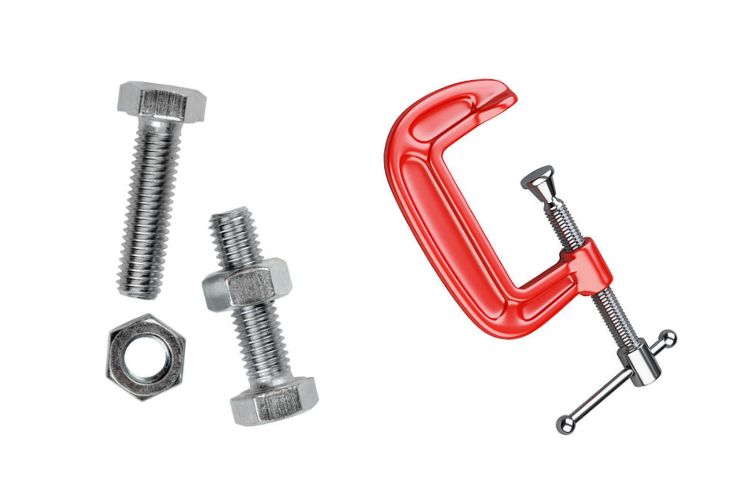
| Generic Hardware |
| 1. Screws |
| 2. Bolts |
| 3. Clamps |
It is important to consult the manufacturer’s instructions or seek professional assistance to ensure that the appropriate hardware is used for a secure and safe connection of the sectional sofa.
Types of sectional sofa connectors
There are several types of sectional sofa connectors. They are listed below.
| Types (Sectional Sofa Connectors) | Explanation |
| 1. Metal sectional sofa connectors: | These are the most common type of connectors used in sectional sofas. They are made of metal, usually steel, and are designed to be durable and long-lasting. Metal connectors are available in various shapes and sizes and can be easily attached to the sofa frame using screws, bolts, or other fasteners. |
| 2. Plastic sectional sofa connectors: | Plastic connectors are lightweight and easy to use. They are also affordable and come in different shapes and sizes. However, they are less durable than metal connectors and may need to be replaced more often. |
| 3. Bracket sectional sofa connectors: | These connectors are designed to attach the sofa frame to the legs. They are available in different shapes and sizes and can be easily installed using screws or bolts. |
| 4. Hook and loop sectional sofa connectors: | These connectors use hook and loop tape to hold the sofa sections together. They are easy to install and remove, but may not be as sturdy as other types of connectors. |
| 5. Dowel sectional sofa connectors: | Dowel connectors are wooden or plastic rods that fit into holes in the sofa frame. They are easy to install and remove, but may not be as strong as metal connectors. |
| 6. Corner sectional sofa connectors: | These connectors are designed to connect the corner sections of the sofa. They are available in different shapes and sizes and can be easily attached to the sofa frame using screws or bolts. |
| 7. Universal sectional sofa connectors: | These connectors are designed to work with different types of sectional sofas and are adjustable to fit different sofa frame sizes and shapes. They are usually made of metal and can be easily attached to the sofa frame using screws or bolts. |
Types of sectional pieces
There are mainly seven types of sectional pieces you can find on the market. They are listed below.
| Types (Sectional Pieces) | Explanation |
| 1. Sofas: | Sofas are typically the largest and most prominent pieces in a sectional. They come in a variety of shapes and sizes, including L-shaped, U-shaped, and curved. |
| 2. Loveseats: | Loveseats are smaller than sofas and typically seat two people. They can be used as standalone pieces or as part of a larger sectional. |
| 3. Chairs: | Chairs are standalone pieces that can be added to a sectional for additional seating. They come in a variety of styles, including armchairs, recliners, and chaise lounges. |
| 4. Ottomans: | Ottomans are versatile pieces that can serve as a footrest, extra seating, or even a coffee table when paired with a tray. They come in a variety of shapes and sizes, including square, round, and rectangular. |
| 5. Corner Pieces: | Corner pieces are designed to fit in the corner of a room, allowing for a seamless transition between the two sides of the sectional. They come in a variety of shapes, including curved and angled. |
| 6. Wedges: | Wedges are similar to corner pieces, but they have a softer, rounded shape that allows for more flexibility in arranging the sectional. They can be used to create a curved or angled configuration. |
| 7. Armless Pieces: | Armless pieces are designed to be placed between other sectional pieces to create a longer seating area. They can also be used as standalone pieces for additional seating. |
Preparing your indoor space for the connection process
Follow the preparation process listed below to make everything ready to give your room a new look with your newly bought sectional sofa.
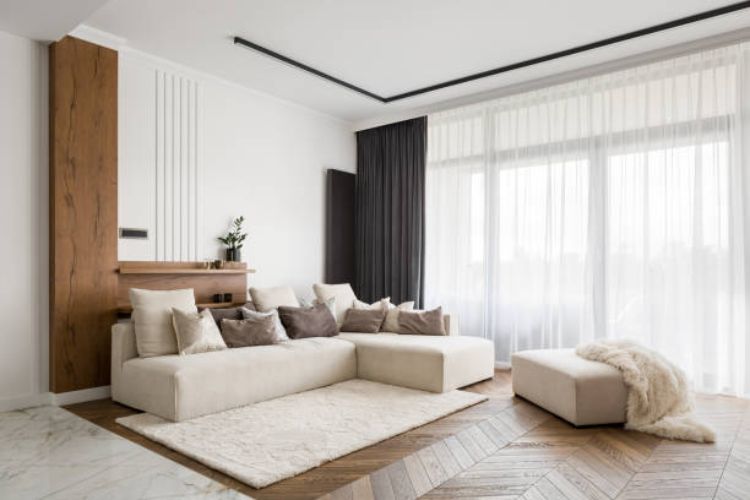
| Instructions To Prepare Indoor Space |
| 1. Clear the area around where the sectional sofa will be placed, removing any obstacles or clutter that may hinder the process. |
| 2. Measure the space where the sectional sofa will be placed to ensure that it will fit properly and allow for comfortable movement around the room. |
| 3. Ensure that the floors are clean and free of debris or dust, as this will make it easier to move the sectional sofa into place. |
| 4. Remove any fragile items or decorations from the room that may be in the way during the connection process. |
| 5. Check that all doorways and passages leading to the room are wide enough to accommodate the sectional sofa, as well as any corners or turns that may need to be navigated. |
| 6. Have any necessary tools or equipment on hand, such as a drill or screwdriver, to assist with any assembly or connecting needed for the sectional sofa. |
| 7. Consider the placement of any electrical outlets or light switches in the room, ensuring that they will not be obstructed or covered by the sectional sofa. |
| 8. If the sectional sofa is being placed on a carpeted area, consider placing a protective layer underneath to prevent any damage or staining to the carpet. |
| 9. Have a plan in place for how to lift and maneuver the sectional sofa into place, including having enough people to assist with the process if necessary. |
| 10. Double-check the manufacturer’s instructions for any specific connection or assembly requirements for the sectional sofa, and follow them carefully to ensure proper and safe installation. |
How to arrange/assemble/connect sectional sofa (step by step)
Arranging a sectional sofa requires careful consideration of the layout and available space in the room. Below are some steps to guide you through the process:
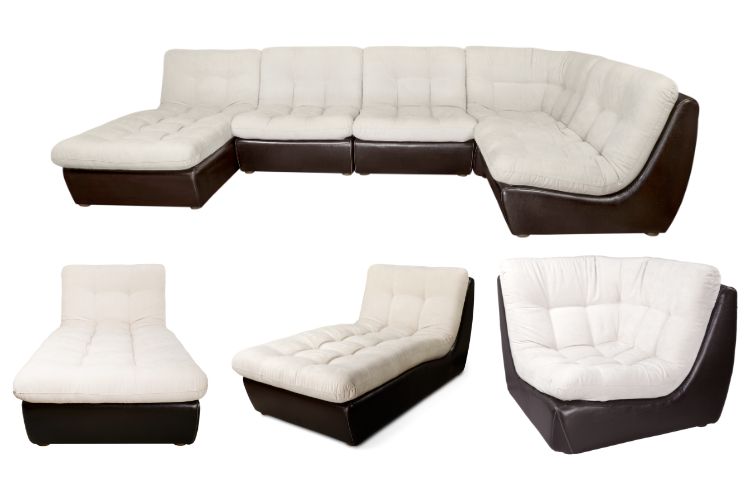
| Instructions To Assemble A Sectional Sofa |
| 1. Measure the room and the sectional sofa to determine the best placement. Consider the size and scale of the room, as well as any architectural features, such as windows or doors, that may affect the placement. |
| 2. Decide on the focal point of the room. This could be a fireplace, a TV, or a large window. Once you identify the focal point, position the sectional sofa in a way that allows everyone in the room to comfortably view it. |
| 3. Determine the flow of traffic in the room. Make sure the sectional sofa does not block any doorways or pathways, and that there is enough space for people to move around the room freely. |
| 4. Consider the shape of the sectional sofa. Depending on the shape, the sofa may need to be divided into two separate pieces, or it may be in one cohesive unit. Plan the placement of each section accordingly. |
| 5. Position the sectional sofa in a way that creates conversation areas. For example, you may want to place a coffee table in the center of the sofa and add a couple of chairs or a loveseat on the opposite side to create a cozy conversation area. |
| 6. Add accent tables and lamps to provide balance and functionality to the space. These pieces can also help define different areas within the room. |
| 7. Use area rugs to anchor the sectional sofa and define different zones in the room. A rug can also add texture and color to the space. |
| 8. Add decorative pillows and throws to the sectional sofa to create a warm and inviting atmosphere. These pieces can also add a pop of color or pattern to the room. |
| 9. Make any necessary adjustments to the placement of the sectional sofa or other furniture pieces to achieve the desired effect. |
| 10. Step back and assess the overall look and feel of the room. |
Measuring your space correctly
Measuring a room correctly is essential to ensure that furniture, decor, and other elements fit properly and create a cohesive look. Here are the steps to measure a room correctly:
| Steps (To Measure A Room) | Explanation |
| 1. Get the right tools: | You will need a tape measure, a notepad, and a pen or pencil. |
| 2. Draw a rough sketch of the room: | Using your notepad and pen, draw a rough sketch of the room. Include walls, doors, windows, and any other existing features in the room. |
| 3. Measure the walls: | Start at one corner of the room and measure the length of each wall. Write down the measurements on your notepad, labeling each wall for future reference. |
| 4. Measure the ceiling height: | Measure the height of the ceiling from the floor to the highest point. If the ceiling height varies, measure at both the highest and lowest points. |
| 5. Measure doors and windows: | Measure the width and height of each door and window in the room. Label each opening with its dimensions. |
| 6. Measure any built-in features: | If the room has built-in shelving, cabinetry, or other features, measure their dimensions as well. |
| 7. Check for irregularities: | Check for any irregularities in the room, such as alcoves, columns, or recesses. Measure these features and note them on your sketch. |
| 8. Double-check your measurements: | Once you have finished measuring the room, double-check your measurements to ensure accuracy. |
Deciding where you want to place your sectionals
When deciding where to place your sectionals, consider the following factors:
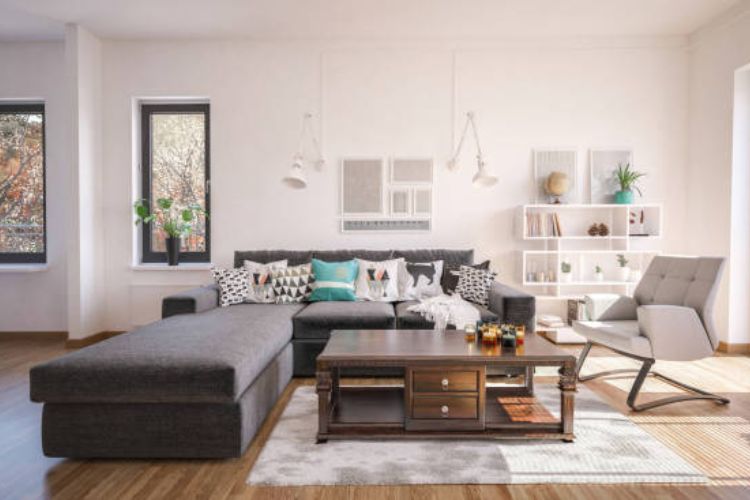
| Factors | Explanation |
| 1. Room layout: | Look at the layout of the room and determine where the sectionals will fit best. Consider factors such as traffic flow, natural light, and focal points in the room. |
| 2. Functionality: | Think about how you plan to use the sectionals. Will they be for lounging or entertaining guests? Will they be used for watching TV or reading? The placement of the sectionals should be based on their intended use. |
| 3. Space: | Sectionals can take up a lot of room, so make sure you have enough space to accommodate them comfortably. |
| 4. Style: | Choose a placement that complements the overall style of the room. Sectionals can be placed against walls, in corners, or even in the middle of the room, depending on the style and layout of the room. |
| 5. Access: | Make sure there is enough clearance around them so that people can move around the room without bumping into them. |
| 6. Comfort: | Place the sectionals in a way that maximizes comfort. Make sure they are positioned in a way that allows people to relax and enjoy the space. Consider adding throw pillows or blankets to enhance the comfort level. |
How to keep a sectional couch together
Keeping a sectional couch together can be a challenge, especially if you have active children or pets in the house. Here are some tips on how to keep your sectional couch in one piece:
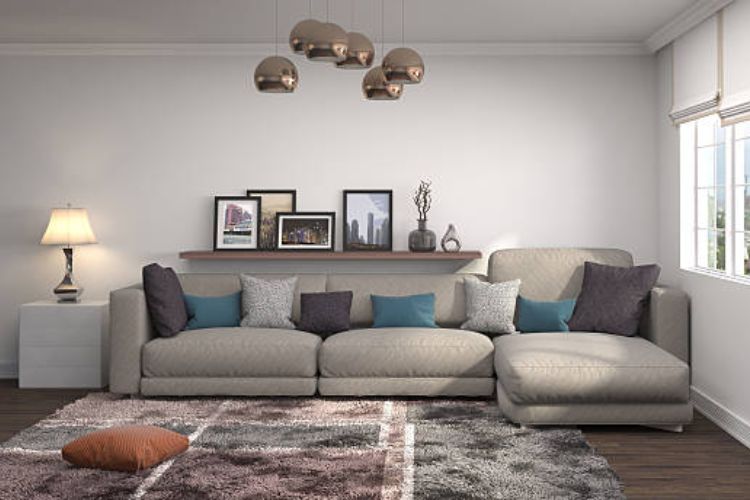
| Tips | Explanation |
| 1. Use sectional connectors: | Many sectional couches come with connectors to help keep the different sections together. If your couch doesn’t have connectors, you can purchase them separately at most furniture stores or online. |
| 2. Velcro strips: | Another option is to use velcro strips to hold the sections together. Place the velcro strips on the bottom of each section, making sure they are lined up with the corresponding section. |
| 3. Non-slip pads: | Place non-slip pads under each section of the couch to help keep it in place. These pads can be found at most home improvement stores. |
| 4. Use furniture grippers: | Furniture grippers are small rubber pads that can be placed under the legs of the couch. They help to keep the couch from sliding on hardwood or tile floors. |
| 5. Rearrange the room: | Try rearranging the room to position the couch against a wall or in a corner. This will help to stabilize the sections and prevent them from separating. |
By using one or more of these tips, you can keep your sectional couch together and enjoy lounging on it without any worry of it falling apart.
Conclusion
Connecting a sectional sofa requires careful consideration of the configuration of the pieces and the available space. One should start by measuring the area where the sofa will be placed, and then arrange the pieces accordingly. Depending on the design of the sofa, connectors or brackets may be required to keep the pieces attached securely.
It is essential to follow the manufacturer’s instructions and use the right tools to ensure that the connections are sturdy and safe. With proper planning and execution, connecting a sectional sofa can result in a comfortable and stylish seating arrangement that meets the needs of any space.
FAQs
Frequently Asked Questions
How to use a sectional sofa separately?
To use a sectional sofa separately, you can simply detach the different sections and position them as individual pieces of furniture. This can be done by removing any connecting hardware or clasps and rearranging the sections to fit your desired layout. You can use individual sections of the sectional sofa to create a cozy seating area in another room or as standalone chairs or loveseats.
How to accessorize a sectional sofa?
Accessorizing a sectional sofa can be done in many ways depending on your personal style and the look that you want to achieve. You can add throw pillows and blankets in coordinating colors or patterns, place a decorative tray on the ottoman or coffee table, hang artwork or mirrors above the sofa, plants, or decorative vases, and use area rugs to define the space.
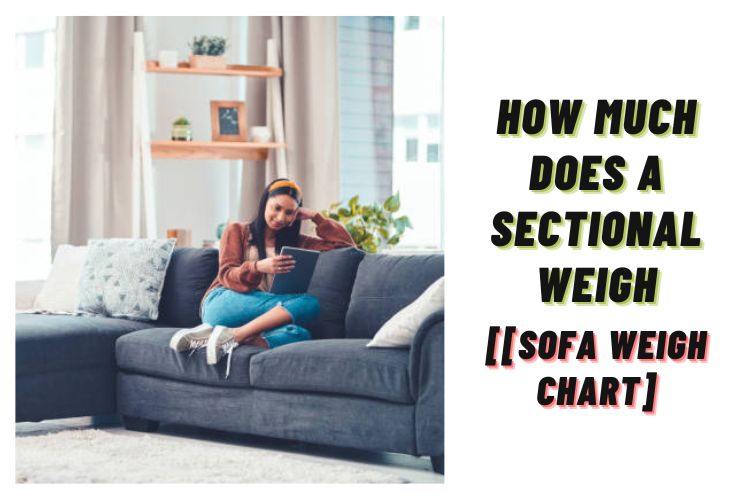
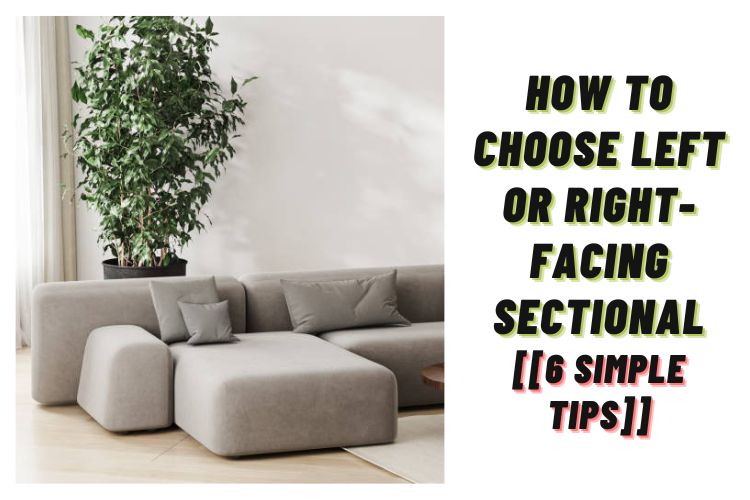
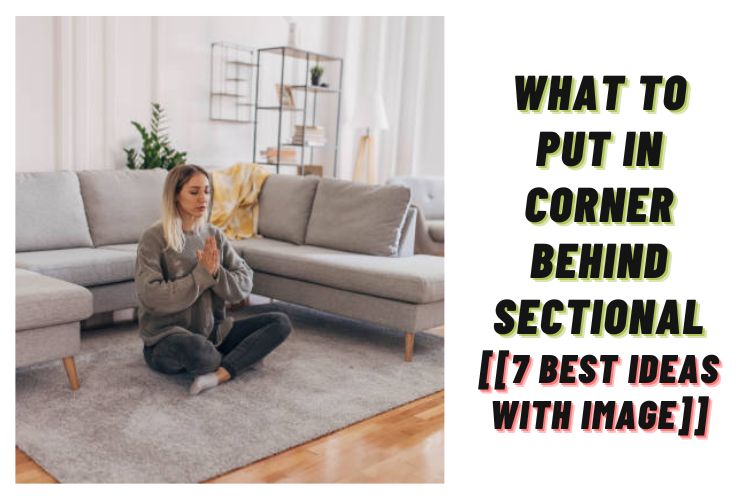
Leave a Reply